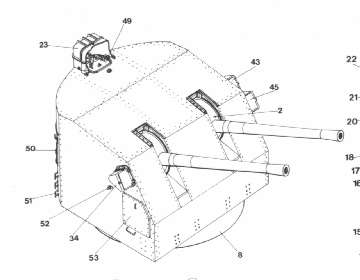

|
|
Year of Construction:
1934
Bore: 127mm/5in Weight of gun: 3251 kg / 3200lbs Weight of barrel: 1.812 tons / 1.783 tons Length of gun: 5683mm / 223.8 ins. Length of bore: ????mm / ???? ins. Wt. of projectile: 25 kg / 55 lbs Max. Range: 16.640m / 18.200 yds at 45° elevation Ceiling: 11.340 m / 37.200 ft. at 85° elevation Max. Elevation: 85° Rate of Fire: 20 - 15 rounds/min |